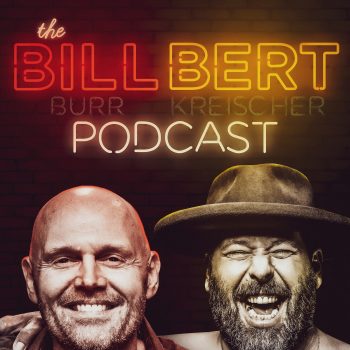In the past decade, podcasts transformed from a niche medium to a popular form of entertainment on par with traditional media. In fact, over 55% of Americans have listened to a podcast, and 37% listen to podcasts monthly.
For content marketers, podcasts represent a fun and engaging way to connect with new audience segments. The low barrier to entry of podcasting means just about anyone with a microphone can distribute their ideas to a global audience.
How Do You Choose a Podcast Format?
If you’re not sure where to begin, start by asking yourself this question: What type of content does my audience want?
Let the answer to this question guide your initial planning. You can look at your website and social media analytics to get a better sense of the topics your audience enjoys learning about the most. For example, if your audience responds well to long-form blogs, you might consider starting a podcast that dives deep into industry challenges. If your audience prefers bite-sized takes on current events, a conversational podcast might be more engaging.
You don’t have to decide just yet. We’ll guide you through the most common podcast formats so you can see what’s possible.
8 Types of Podcasts
Considering that there are more than 850,000 active podcasts available for download at this very moment, we understand if the market looks a little crowded to you. If there are so many podcasts out there, how are you supposed to make a mark on the medium?
There’s really no reason to sweat. Although the number of podcasts is always growing, it doesn’t mean you have to compete with all of them. With the right strategy, you can always find a niche audience that is ravenous for your content, no matter how humdrum a general audience might find your industry.
The first step toward creating a podcast that appeals to your ideal audience is to pick the right podcast format. There’s always room to put your unique spin on these 8 major types of podcasts:

1. Interview Podcasts
An interview podcast usually involves one or two hosts who speak with one or more guests each episode. In this format, the guest provides unique expertise or insights on a given topic, industry or theme. You can actually break this format further into two podcast styles:
- Expert interviews: In podcasts like Reid Hoffman’s Masters of Scale, the interviewer focuses on a specific topic in which the interviewee is considered a thought leader. For example, a guest like Bill Gates might share stories about his experiences as a technology entrepreneur. Many audience members listen to this type of podcast to learn more about a given industry or gain insights that will help them in their own careers.
- Entertainment interviews: Entertainment-style podcasts invite guests to share interesting stories about their lives. These shows are often hosted by comedians or entertainment journalists. For example, showrunner Noelle Stevenson recently appeared as a guest on comedian Carmen Esposito’s podcast Queery to discuss her experiences in the entertainment industry.
Interview-style podcasts can require quite a bit of research. At the same time, the podcast host needs the right skills to draw out interesting stories from guests. This format is a great way to provide a range of opinions and viewpoints.
Interview Podcast Examples

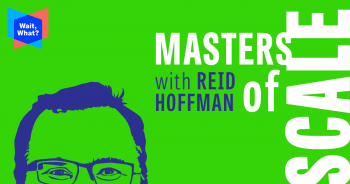
2. Conversational Podcasts
Conversational, co-hosted podcasts are very similar to traditional radio shows. In this format, two podcast hosts have entertaining conversations about specific themes and topics. Often, co-hosts will discuss trending news stories and provide insightful — or humorous — commentary.
Conversational podcasts may include guests, as well. For example, Brafton’s Above the Fold podcast, co-hosted by Francis Ma and Jeff Baker, often features guests from around the world of content marketing.
This type of podcast requires a high level of comfort and familiarity between the hosts. If the hosts don’t know each other well or don’t get along, the audience will be able to tell. Because you can’t script a conversation — or at least, you shouldn’t — this format is best for hosts who can improvise on the spot.
The conversational podcast may present unique technical challenges. For example, if the hosts reside in separate cities, they’ll need special podcast recording software to record the voice tracks independently and then splice them together.
Conversational Podcast Examples
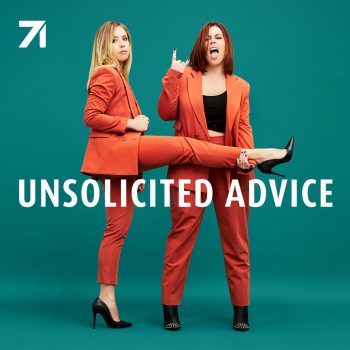
3. Monologue Podcasts
In the monologue style of podcast, a single host speaks for the entirety of each episode. These podcasts are usually hosted by someone who is an expert in a given field. Audience members tune in to learn about a specific topic or get an informed opinion on recent events.
For example, in the Philosophize This! podcast, host Stephen West takes listeners on a journey through the history of world philosophy. Beginning with presocratic philosophy, West provides an overview of major movements in philosophic thought throughout the ages.
This style of podcast can be applied to any topic — but hosts should have enough experience and expertise to fill many episodes. That said, it’s possible to produce a limited-run podcast that covers a single topic or issue, similar to a serialized audiobook.
The monologue format provides the advantage of not being dependent on other people. The host doesn’t need to book guests or configure schedules with another host. However, this style still requires a fair amount of research.
Monologue Podcast Examples
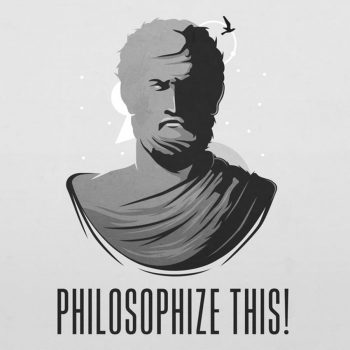

4. Storytelling / Investigative Podcasts
Podcast listeners enjoy storytelling and investigative podcasts for their immersive experiences. In this format, one or more hosts use each podcast episode to tell an entire story or a chapter of an ongoing story.
There are many different examples of non-fiction story-based podcasts. On one end of the spectrum is Dan Carlin’s Hardcore History podcast. Carlin produces extremely well-researched miniseries that take his podcast listeners through momentous periods of world history. In fact, his show involves so much research that each miniseries takes months to produce.
On the other end of the spectrum is My Favorite Murder, hosted by Karen Kilgariff and Georgia Hardstark. Each episode covers a specific case in gruesome detail. This show is also heavily researched, but provides more personal commentary on each subject.
Non-fiction podcasts can require a lot of resources. Podcasters who excel at this format combine excellent research skills with a keen eye for entertainment value.
Storytelling/Investigative Podcast Examples

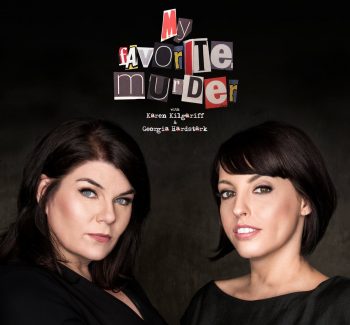
Subscribe to
The Content Marketer
Get weekly insights, advice and opinions about all things digital marketing.
Thanks for subscribing! Keep an eye out for a Welcome email from us shortly. If you don’t see it come through, check your spam folder and mark the email as “not spam.”
5. Roundtable Podcasts
Roundtable podcasts, or panel shows, involve a consistent or rotating group of hosts who provide commentary and conversation around specific topics. Often, there is a main host who MCs each episode while co-hosts fill specific roles. For example, some co-hosts may provide more comedic commentary, while others offer in-depth expertise.
Panel shows often try to make their audience members feel like they’re part of a private club. For instance, long-time listeners will pick up on in-jokes and host personality quirks more so than someone tuning in for the first time.
Roundtable podcasts take the stress of one person by splitting the workload among a number of different people. For example, on the Joe Budden Podcast, the former rapper is joined by co-hosts and guests who discuss hip-hop, sports and news items.
Roundtable Podcast Examples


6. Theatrical Podcasts
Fiction podcasts have been a growing trend for years. Some theatrical podcasts consist of a single host who narrates a story in a similar manner as an audiobook. Other podcasts within this format utilize an entire cast of performers and sound engineers to create more immersive experiences.
In this format, podcast hosts strive to create fictional worlds that entertain their listeners. It demands a level of creativity and experience to keep listeners engaged. While this format doesn’t require as much research as others on this list, it still involves a lot of work. At the same time, that means that the competition is high. Not only do these podcasts compete with each other, but also with other forms of entertainment like TV shows, audiobooks and movies.
Theatrical Podcast Examples
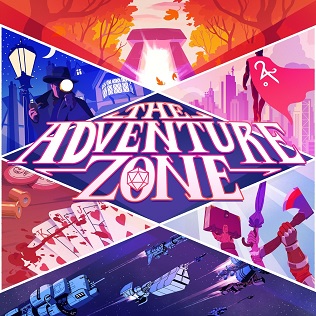
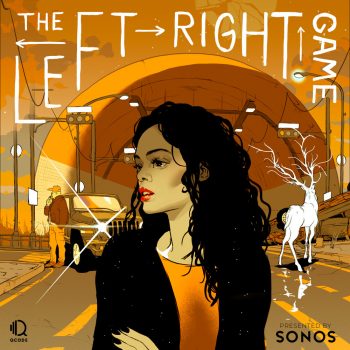
7. Repurposed Content Podcasts
At Brafton, we love repurposing content. The process of repurposing existing content provides several benefits, from boosting audience engagement to serving different needs along the sales funnel. Plus, repurposing content can give you the breathing room you need to create fresh, interesting content.
News programs are among the most common in this category. The same story can appear in print, video and audio. This format works well for brands that already produce a lot of content for the web. For example, if your business has a robust backlog of blog content, you could turn each post into its own podcast episode. That would effectively give you double the volume of content and allow you to reach a segment of your target audience that prefers audio content to a written format.
Repurposed Content Podcast Examples

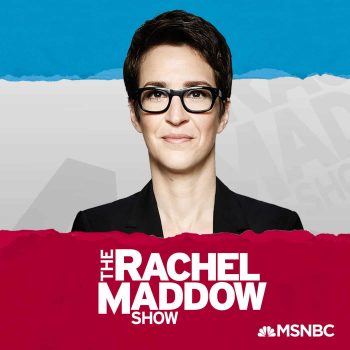
8. Hybrid Podcasts
Podcasts are a highly flexible medium. You can mix and match the basic formats from this list to create your style. For example, a podcaster with expertise in a given subject area might host a monologue-style podcast and occasionally interview guests. Likewise, a panel show might split each episode into segments, including a space for the main host to present a monologue.
Or, you might come up with a podcast format that’s nothing like anything else on this list! That’s one of the great things about the medium. The barrier to entry is quite low compared to starting a radio show or TV program. There are even free hosting options that allow you to record episodes and post them to major distribution channels, all directly from your smartphone.
Quick Tips for Starting a Podcast
Feeling inspired to start your own podcast? Here are some quick tips to get started:
What Equipment Do You Need To Start a Podcast?
At the very least, you’ll need a smartphone to start recording a podcast. Your phone has a microphone and an internet connection, which is all you need to record and distribute your podcast. However, podcasts recorded on mobile devices can sound tinny and unprofessional.
The next best set-up is equally simple: A computer and a microphone. You can use free — or very affordable — software to monitor your vocal levels and produce a show that sounds nearly professional.
If you want the full Joe Rogan experience, you’ll need to spend quite a bit more on professional equipment, including:
- Stand microphones.
- Acoustic foam.
- Audio mixers.
- Pop filters.
- Editing software.
Of course, you’ll also need somewhere to record. A quiet office space is usually a good place to start. Marc Maron famously started recording his podcast WTF in his garage, and even interviewed former President Barack Obama there. So don’t worry if you don’t have access to a recording studio.
How Much Money Does It Take To Start a Podcast?
The cost of producing a podcast can vary greatly depending on a number of factors. If you plan on creating a solo podcast with minimal equipment, the barrier to entry can be as low as $0. However, most podcasters pay for website and podcast hosting. Distribution networks like Spotify and Apple Podcasts don’t host your actual podcast files. For that you’ll need to use a service like Buzzsprout, Anchor, SoundCloud or Captivate.
If you’re starting a podcast from scratch, without any equipment, you can expect to spend anywhere from $50 to $500 to launch your show. But remember, many people have started successful podcasts with little more than a smartphone and a dream.
